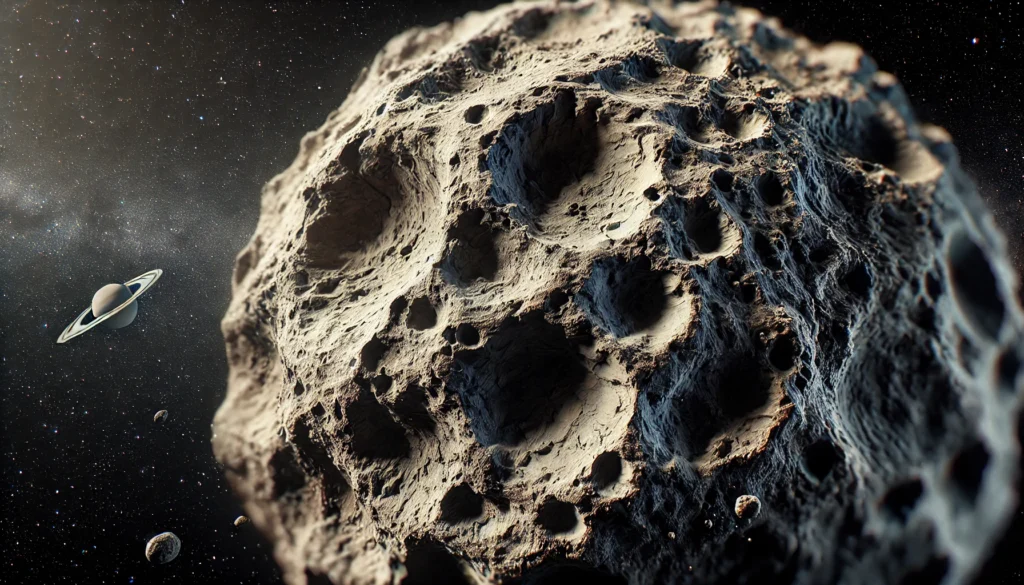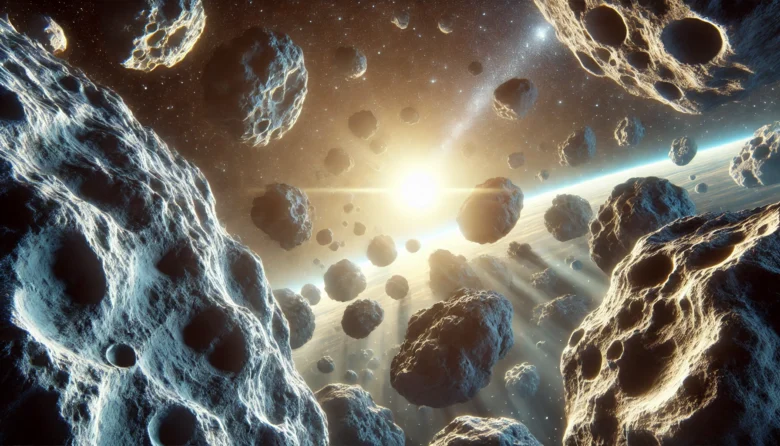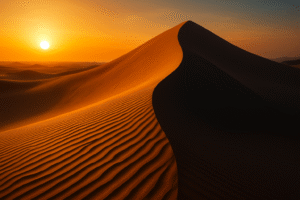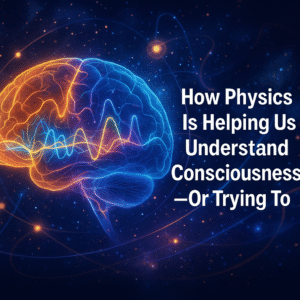Space is vast and full of mysteries, and among them are asteroids—rocky remnants from the early solar system. These fascinating celestial bodies, scattered throughout space, hold key insights into the formation of planets and even life on Earth. In this blog, we’ll take a closer look at the formation and composition of asteroids, exploring what makes these space rocks so intriguing. So, let’s dive into this cosmic journey and unravel the secrets of asteroids!
What Are Asteroids?
Asteroids, often called “minor planets” or “planetesimals,” are rocky objects that orbit the Sun. They are much smaller than planets, with most ranging from the size of a car to hundreds of kilometres in diameter. While many asteroids reside in the asteroid belt between Mars and Jupiter, they can be found throughout the solar system. But where did these rocky objects come from, and why are they so important?
The Birth of Asteroids: Formation
Asteroids are ancient relics, leftovers from the early formation of our solar system about 4.6 billion years ago. During that time, dust and gas swirled around the young Sun in a massive disk. Over time, particles collided and stuck together, forming larger and larger objects. Some of these objects coalesced into planets, but many smaller pieces—like asteroids—never quite made it. Instead, they became frozen in time, a snapshot of the early solar system’s building blocks.
Protoplanetary Disk: The Starting Point
The solar system began as a rotating disk of gas and dust known as a protoplanetary disk. Within this disk, particles of ice, dust, and metals began clumping together, driven by gravity. Over millions of years, these small clumps grew into planetesimals, the precursors of planets. However, not all planetesimals formed planets. Many of them remained small and became asteroids, carrying with them the same materials that existed in the early solar system.

Gravitational Tug-of-War: Jupiter’s Influence
One of the reasons why so many asteroids are found in the asteroid belt is due to Jupiter. The immense gravitational pull of this gas giant prevented the planetesimals in the asteroid belt from merging into a planet. Instead, their collisions shattered them into smaller fragments, creating the asteroid belt we know today. Without Jupiter’s interference, we might have had an extra planet in our solar system!
Types of Asteroids: Composition Matters
Asteroids come in different types, classified based on their composition. These compositions give us clues about where and how they formed. The three main types are:
C-type (Carbonaceous) Asteroids: C-type asteroids are the most common, making up about 75% of known asteroids. They are rich in carbon and are incredibly dark, absorbing most of the sunlight that hits them. Their composition is similar to that of the Sun, minus the hydrogen, helium, and other gases. These asteroids are believed to contain water-bearing minerals, making them interesting targets for studying the origin of water in our solar system.
S-type (Silicaceous) Asteroids: S-type asteroids are composed mainly of silicate (rocky) materials and metals, like nickel and iron. These asteroids are brighter than C-type asteroids and are typically found closer to the Sun. S-type asteroids are thought to have undergone significant heating, which altered their composition.
M-type (Metallic) Asteroids: As the name suggests, M-type asteroids are primarily made up of metal, particularly nickel and iron. These asteroids are remnants of the cores of larger planetesimals that broke apart. Some M-type asteroids may have water on them despite their metallic composition, making them valuable for scientific research and future mining missions.
Case Study: The Dawn Mission to Vesta and Ceres
NASA’s Dawn mission provides us with a close-up view of two of the largest asteroids, Vesta and Ceres, which reside in the asteroid belt. Dawn orbited these space rocks, offering unprecedented details about their surfaces and compositions.
Vesta: Vesta is a rocky asteroid with signs of volcanic activity. It’s considered more like a planet than an asteroid due to its differentiated structure, meaning it has a core, mantle, and crust.
Ceres: Ceres, on the other hand, is classified as a dwarf planet. It’s rich in water ice and even shows signs of occasional water vapour plumes, making it a possible location for studying the potential for life in the early solar system.
Asteroids and Earth: Impact and Importance
Asteroids are more than just floating rocks in space; they have played an important role in Earth’s history. The most famous example is the asteroid that is believed to have wiped out the dinosaurs around 66 million years ago. This impact left a massive crater in what is now the Yucatán Peninsula in Mexico and dramatically altered the course of life on Earth.
However, not all asteroid impacts are catastrophic. Smaller asteroids frequently enter Earth’s atmosphere, most of which burn up before hitting the surface. However, studying these smaller space rocks can still teach us a lot about the early solar system and the formation of planets.
Mining Asteroids: The Future of Space Exploration?
Asteroids contain valuable resources, including metals like iron, nickel, and even platinum. Some companies are already looking into the possibility of mining asteroids for these resources. One such company is Planetary Resources, which aims to explore and mine near-Earth asteroids for water and metals.
Water found on asteroids could be converted into rocket fuel, making asteroid mining a potential game-changer for future space missions. By using resources from asteroids, space agencies like NASA and private companies could create fuel depots in space, reducing the need to launch everything from Earth.
Conclusion
Asteroids are like time capsules, preserving the raw materials from which our solar system was born. Their diverse compositions offer insights into the processes that shaped planets and moons, while their potential for future mining opens new doors for space exploration. Understanding the formation and composition of asteroids not only helps us appreciate our cosmic origins but also prepares us for the next frontier in space.
Author’s Note
Asteroids have always fascinated me because they offer a glimpse into the past of our solar system. I hope this blog sparks your curiosity about these incredible space rocks and their role in the universe. Let’s keep exploring together!
G.C., Ecosociosphere contributor.
References and Further Reading
- NASA’s Dawn Mission
- What Are Asteroids? – Discovering Astral Marvels. https://myspacemuseum.com/asteroids
- A giant asteroid like Burj Khalifa will cross Earth at 90,000 km on Sunday – The Press Stories. https://presstories.com/2020/11/24/a-giant-asteroid-like-burj-khalifa-will-cross-earth-at-90000-km-on-sunday/
- Solar Systems – Shaostoul. https://shaostoul.com/things/cosmos/solar-systems/
- PPT – Guided Notes on Our Solar System PowerPoint Presentation, free download – ID:39361. https://fr.slideserve.com/lotus/our-solar-system





Comments
Hi my loved one I wish to say that this post is amazing nice written and include approximately all vital infos Id like to peer more posts like this
you are truly a just right webmaster The site loading speed is incredible It kind of feels that youre doing any distinctive trick In addition The contents are masterwork you have done a great activity in this matter
Noodlemagazine Awesome post! We’ll be linking this exceptional article on our platform. Keep delivering great content